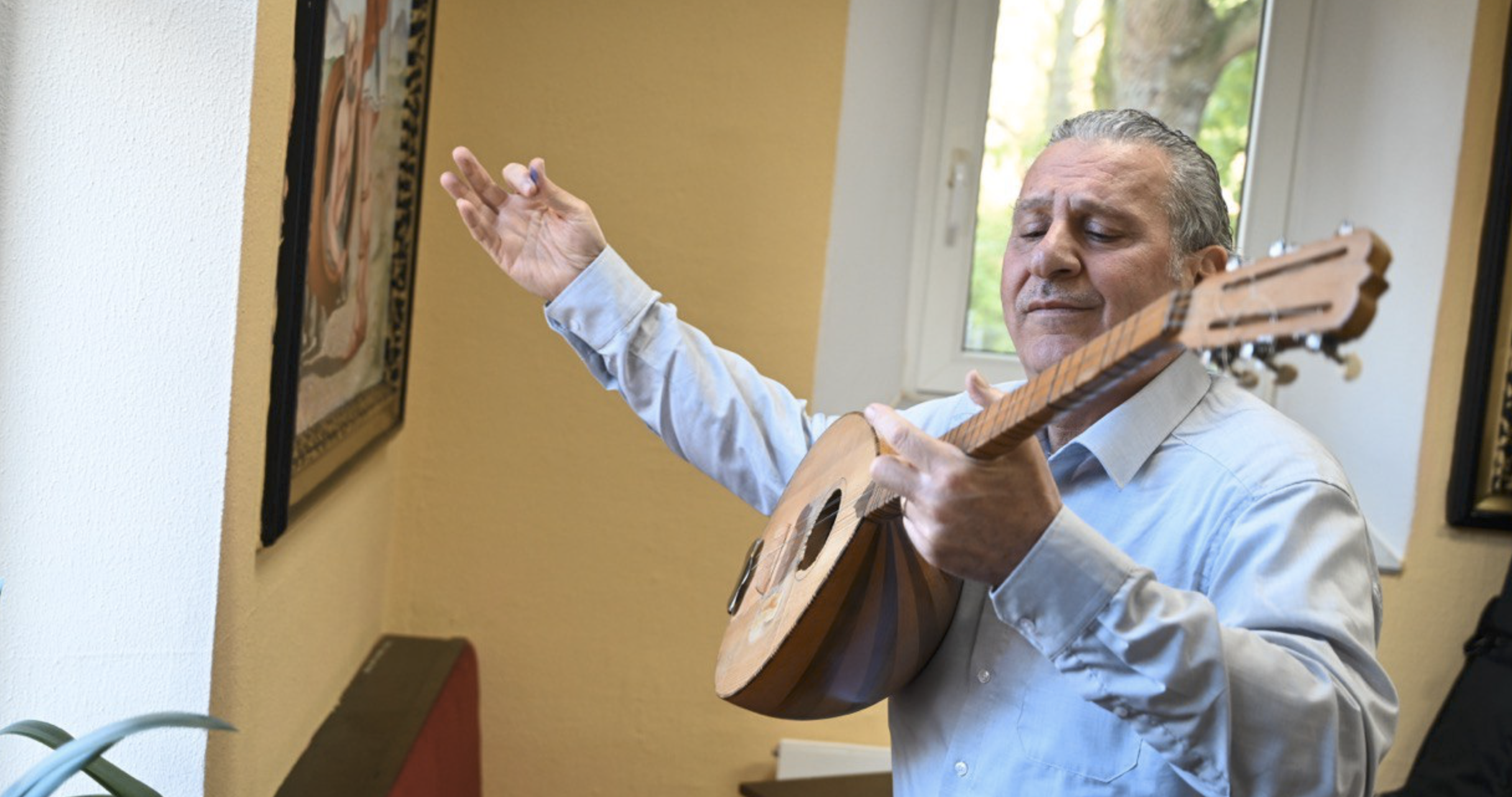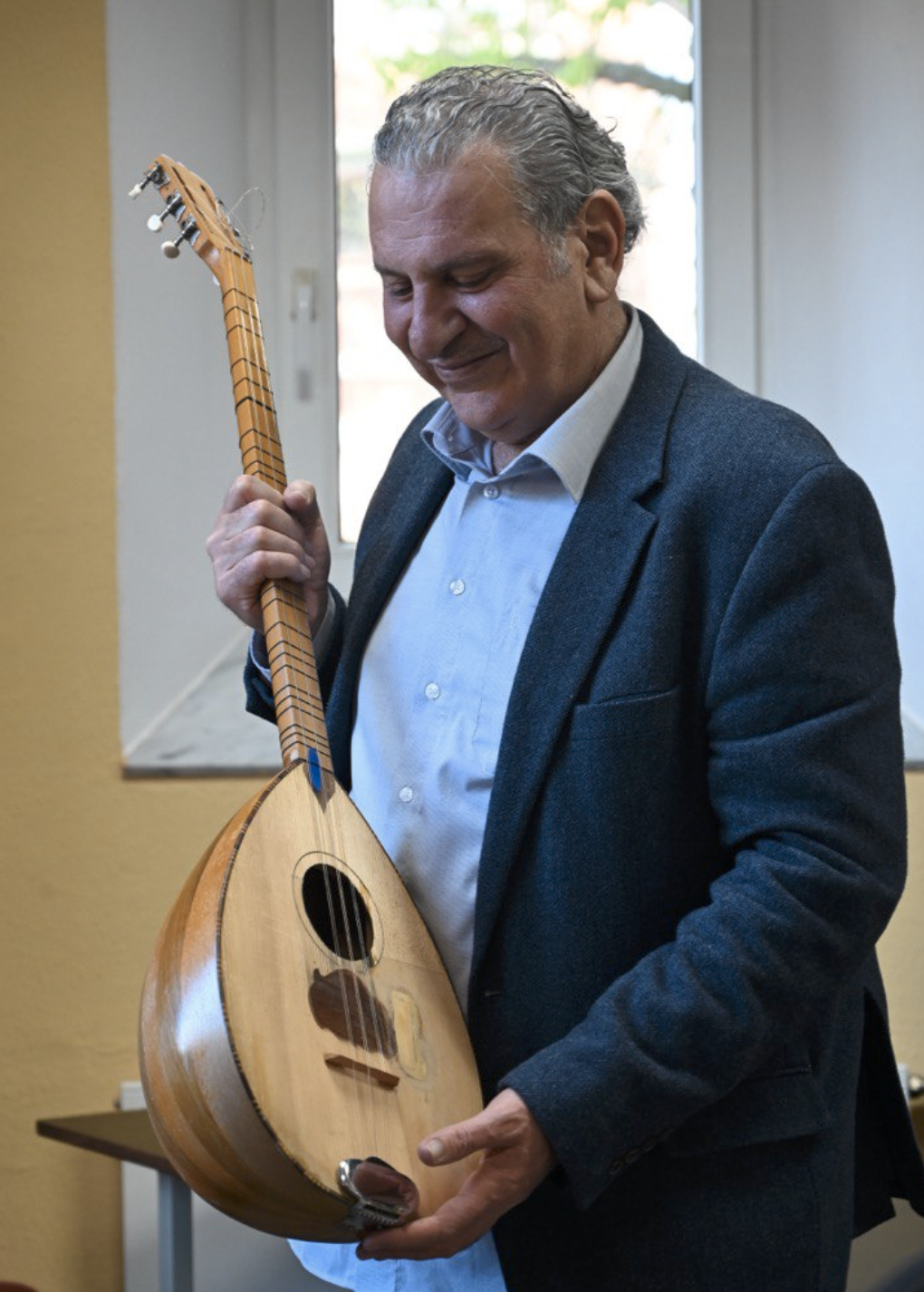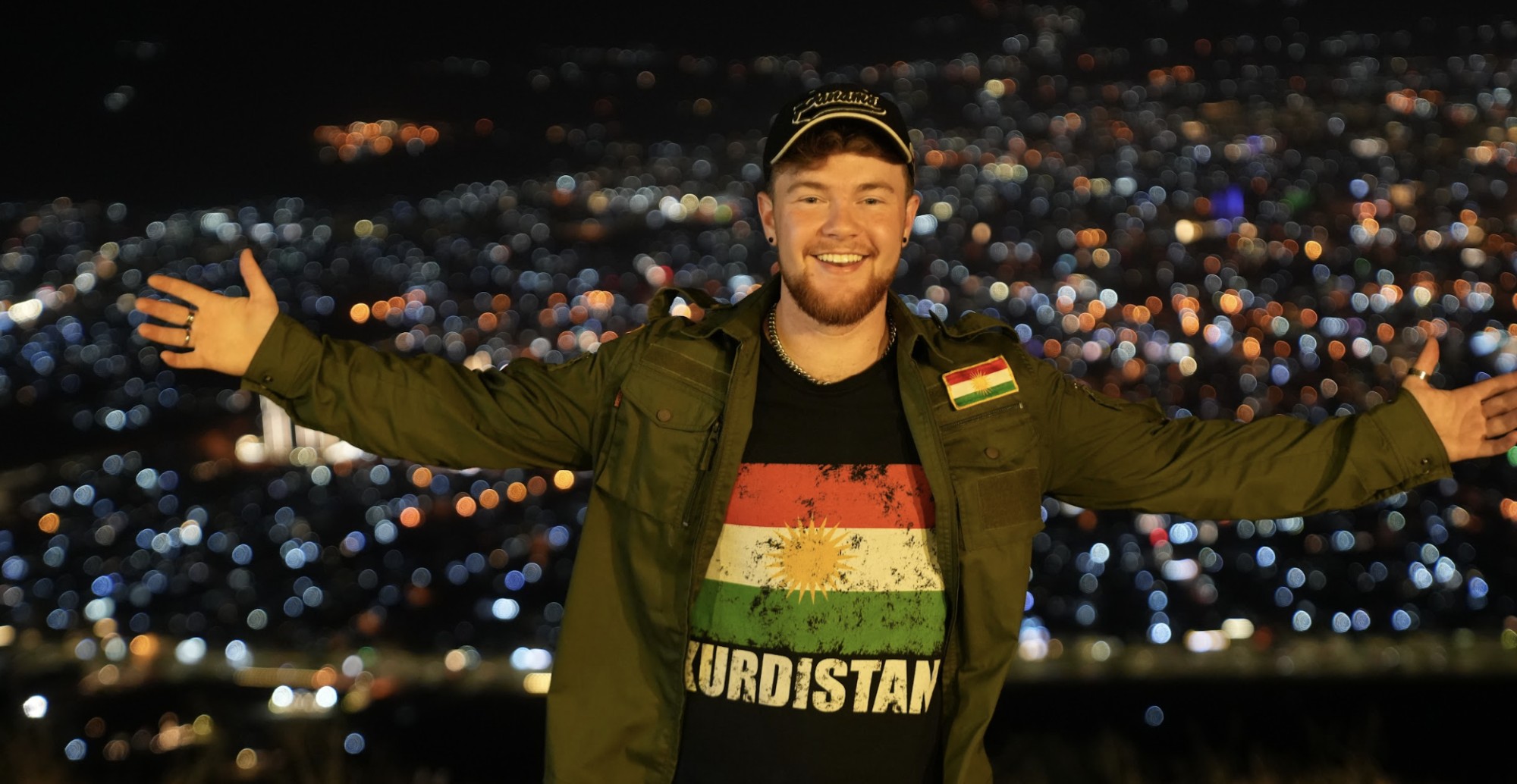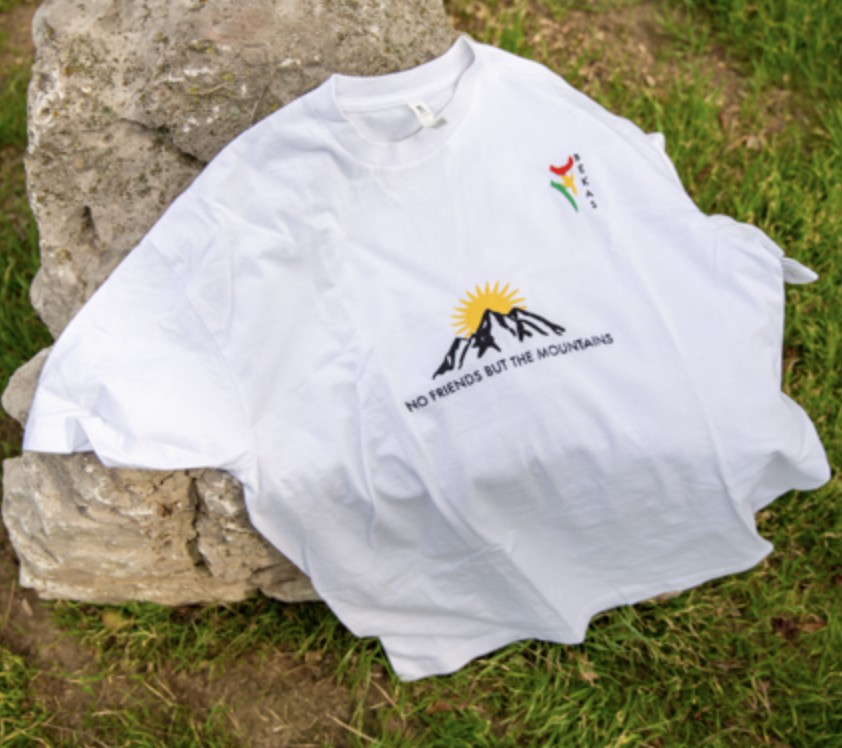I met the singer Ibrahim Keivo in Al-Hasakah, a city in Western Kurdistan (northeastern Syria), about 30 years ago, in 1993 to be exact. Back then he was not that well-known except by a close circle of local people. Fast forward to today, I was about to conduct an interview with the famous musician Nuri Iskander, as I was working as a correspondent for Welat newspaper, which used to be published in Istanbul. I had lost contact with Keivo because I had re-settled in Europe, whereas he remained in the country.
I had not heard from him since until he, too, immigrated to Europe, and his fame began to grow with his wonderful concert performances, most notably in the famous Morgenland Festival. He captured my attention since he, among other Armenian singers, sang in Kurdish. I was eager to interview Keivo and learn more about his life and journey in music. He proved receptive to my approach and patiently answered all of my many questions.

First roots
Thanks to the coexistence between Armenians and Kurds throughout history, great Armenian singers have been singing in Kurdish and enriching Kurdish music for nearly a century. Keivo, being Armenian from the Western Kurdistan, Kurdish region in Syria, is a case in point. He embodies a wonderful musical blend between the two neighboring peoples, who share so much in terms of history, geography, and dispositions as music-loving societies.
I first asked why he chose to sing in Kurdish. “I am Armenian, and Kurdish was a language passed down to me from my father and grandfather. It has been our language for generations, tracing back to my grandfather’s time. He fled the city of Van as a child to escape the threat of violence during the Armenian massacres in 1914 and sought refuge among the Yezidi Kurds. Despite being just eight years old at the time, he retained fluency in Armenian. Over time, however, he fully embraced the culture, customs, and traditions of the Yezidi Kurdish community,” Keivo elaborates.
“He settled in the village of Al-Quriyah, nestled within Viransehir (in Turkey), where he spent his formative years. Among the Yezidis, he was able to retain his religion, as the Yezidis, unlike other religious groups, abstain from proselytization,” he explains.
Indeed, it was within the Yezidi Kurdish community that the young boy’s language remained intact until he married an Armenian woman, also a survivor of the massacres. “My grandfather delayed starting a family until he relocated to the village of Doker, a settlement established by the Yezidis near the town of Amuda in Western Kurdistan. It was there that he welcomed a daughter and a son, my father,” Keivo narrates.

The Kurdish language: a melody of home and heritage
“We spoke Kurdish – my father, my aunt, my brothers, and I,” reminisces Keivo. “Sometimes, my grandfather would teach us Armenian. My mother, an Armenian from Mardin, was deeply immersed in Kurdish culture. Kurdish was the language that bound our family together, the medium through which we communicated. When I sing in Kurdish, it’s like singing in my mother tongue – it feels natural and comforting, like an integral part of my life.”
Elaborating on his choice to sing in Kurdish, Keivo adds, “We hail from Mesopotamia, a region characterized by its diversity of peoples, sects, and religions. While I introduce myself as a singer from Mesopotamia in every concert, Kurdish culture strongly influences the essence of my art. The instruments I use – the buzuq, tanbur, saz, and baglama – are deeply rooted in Kurdish tradition, further enriching the authenticity of my performances.”
Continuing the conversation, Keivo reflects on the richness of the Kurdish language, stating, “The Kurdish dictionary is remarkably comprehensive, with words that aptly express a wide range of emotions, coupled with the diversity of its dialects.”

Armenian stars in the Kurdish singing sky
The historical interaction between Armenians and Kurds is a fascinating and enduring phenomenon. These two peoples have shared the same geography for thousands of years, influencing one another in various aspects of life. Despite their distinct religions, with Armenians primarily being Christians and Kurds predominantly Muslims, their relationship has generally been positive throughout history.
However, during the tragic massacres of 1914-1915, the Ottoman authorities manipulated the religious sentiments of some Kurds to incite hatred against their neighbors, leading a few to participate in the mass killings. Despite this, many Kurds and Yezidis helped save hundreds of thousands of Armenians.
In a video-taped interview, the late artist Aram Tigran spoke about this period, sharing his father’s testimony: “My father used to say that we owe the Kurds our lives. We must remember this.” Keivo further elaborates on this harmonious relationship: “many Armenian musicians made significant contributions to Kurdish art and music. Figures like Aram Tigran and Garabet Xaco stand out, as well as Kevork, a talented musician from Qamishli who played the tanbour and sang fluently in both Armenian and Kurdish.” These stories serve as poignant reminders of the bonds forged between Armenians and Kurds, transcending their differences and reinforcing a shared cultural heritage.
Keivo confirms that many cities were culturally diverse, with Kurds and Armenians living together and influencing one another. “The Kurdish and Armenian songs share the same roots,” says Keivo, paraphrasing the renowned Armenian scholar, priest, and musicologist Soghomon Soghomonian, widely known as Komitas, who collected Armenian folk songs and drew many comparisons between Kurdish and Armenian music. “The slight difference lies in the Armenians having church music due to their religion,” Keivo adds. Nevertheless, “coexistence has naturally led to the two peoples’ music resembling one another, which is only self-evident.”

Stroke of luck and great success
“In Europe, your art gained significant reach. Doors opened for you, and you left a distinctive mark on Kurdish music in the diaspora. Can you share more about that experience?” I ask Keivo, curious about how he achieved such a remarkable presence at international music festivals in Germany and beyond, as seen through YouTube.
He shared with me that he wanted Kurdish songs to break free from traditional forms that relied heavily on instruments like the oud, tanbur, and buzuq. “I envisioned reaching a Western European audience in a different way,” he says, recounting how luck smiled upon him when he met the organizers of the Morgenland Festival, held annually in the German city of Osnabruck, which focuses on blending Eastern and Western music.
Before this opportunity, Keivo had participated with his great musical mentor, the late Syrian musician Nuri Iskandar, in an important event in the Netherlands where they presented a significant work. Of Syriac origin, Iskandar composed the music for the play The Bacchae, while Keivo was given the lead singing role, performing solo in sixteen scenes. “I performed the play in renowned theaters and opera houses across Europe, most notably at the Acropolis Theater in Athens and in Thessaloniki,” Keivo shares with enthusiasm.
Since then, he has forged strong relationships with influential international musicians who have helped propel him to fame. “Even while in Syria, I participated in international festivals, including those held at the Opera House, where I presented unique music in collaboration with jazz bands, which weren’t widely known in Arab countries,” Keivo adds, explaining how these conditions helped his music gain widespread recognition and earn him international accolades, including the Golden Ornina Award at the Fifth Syrian Song Festival in Aleppo in 1998 and the French Charles Croce Prize in 2010.
When I ask him about the Morgenland Festival, he explains that he and artist Aynur Dogan performed the song “Kece Kurda” (Kurdish Girl) alongside the Chambermusik Symphony Orchestra. “I believe we successfully elevated the Kurdish song beyond its classical framework and brought it to a beautiful position that attracted considerable attention,” he says confidently. “In that particular concert, the music was arranged by leading German musician and composer Wolf Kerschek.”
Keivo fondly recalls memorable moments from that significant performance, which has reached nearly 35 million views on YouTube. “We also presented Kurdish songs in the flamenco style,” Keivo says, adding, “We have extensive experience in this genre in Spain and Spanish-speaking countries, thanks to the musician Ghani Mirzo. Our work left a powerful impression on the audience.”

Summer festival in the Kurdistan Region
In 2013, Keivo visited the Kurdistan Region to celebrate a music festival. He shared the behind-the-scenes challenges that he and Mirzo faced during the organization of the event.
“I went to Kurdistan to participate in a music festival organized by Morgenland. A year prior, we had celebrated the Kurdish art festival in Osnabruck. Afterward, we reached out to the festival director Michael Dreyer, whom I had known since he visited me in Al-Hasakah along with a filmmaker to create a documentary about me. We tried tirelessly to convince him to replicate the festival in Kurdistan. After having many conversations with the relevant authorities in Kurdistan and overcoming several difficulties, we finally agreed to host the Kurdish music festival in Erbil.”
Around a hundred musicians participated in the event, which was called Summer Festival and opened with a grand ceremony in Saad Abdullah Hall. It was attended by over 2,000 people, including representatives from the diplomatic missions of various countries. “We began with Ghani Mirzo’s band and international musicians like the renowned clarinetist Kenan Al-Azmeh from Syria and percussionist Ronnie Barrak from Lebanon. We were also joined by a large German choir from the Osnabruck Church,” Keivo explains.
When I ask if he has returned to Kurdistan since that memorable festival, Keivo replies, “Yes. Last year, 2023, we participated in a musical event supporting the victims of the 1988 Halabja massacre and those affected by the 2014 Yezidi Sinjar tragedy. This was organized by the Goethe Institute in Erbil, with active participation from the Mirzo Music Ensemble and German musicians.”

The butterfly effect: music nurturing coexistence
In a world dominated by wars and ravaged by crises, people search for soft power – a rock to cling to in the face of a torrential river. Music, along with other forms of art such as painting, literature, and sports, provides an opportunity to spread a culture of tolerance, build bridges, or repair what has been destroyed. Wanting to hear the perspective of this multicultural musician, I asked Keivo about the role that art can play in fostering coexistence and reducing hate.
Keivo, who was awarded the Shield of Excellence this year for his efforts in promoting love and tolerance, shares his thoughts. “I always say that the sound of music is louder than the sound of weapons. Music is the language of the world and allows hearts to communicate. Sometimes I see people crying emotionally at my concerts, even if they don’t understand the lyrics of the songs. Music transcends language barriers because it’s the language of feelings, connecting people in a beautiful, shared framework. For instance, when I sing rhythmic dance songs, Kurds and Armenians hold hands and dance together. Others who don’t know the dance origins or understand the lyrics spontaneously join in. Soon, Germans, Americans, Belgians, and others are forming a large dance circle. This is what music can do.”
Keivo continues enthusiastically, almost as if I can hear his heartbeat: “I had a special experience on stage when I performed the song Kece Kurda with Aynur [Dogan]. I’m Armenian, Aynur is Kurdish, and the maestro, Naci, is Turkish. The orchestra members hailed from all over: the United States, Armenia, Azerbaijan, and Syria. What better example could there be of bringing people together?
“The audience loved what we presented. It was a beautiful, civilized image that reflects coexistence in our region. At the end of the performance, the audience stood and applauded for over five minutes. Naci hugged me, and I whispered to him, ‘Did you see what music can do, Naci?’”
As our conversation nears its end, I ask Keivo if he has sung in languages other than Kurdish and Arabic. He replies, “Of course, yes. I don’t only sing in Kurdish; I sing in almost all Mesopotamian languages: Armenian, Assyrian, Arabic, and Syriac. Music is a unifying force. As I said, it’s the language of feelings. Beautiful music demands your attention, even if it’s the music of your enemies.”
This sentiment resonates deeply. Yes, beautiful music compels you to listen, even if it’s from your enemies. I would add that music and other arts can reduce hostility, which is desperately needed in these times of unwarranted enmity.
Jan Dost is a prolific Kurdish poet, writer and translator. He has published several novels and translated a number of Kurdish literary masterpieces.

